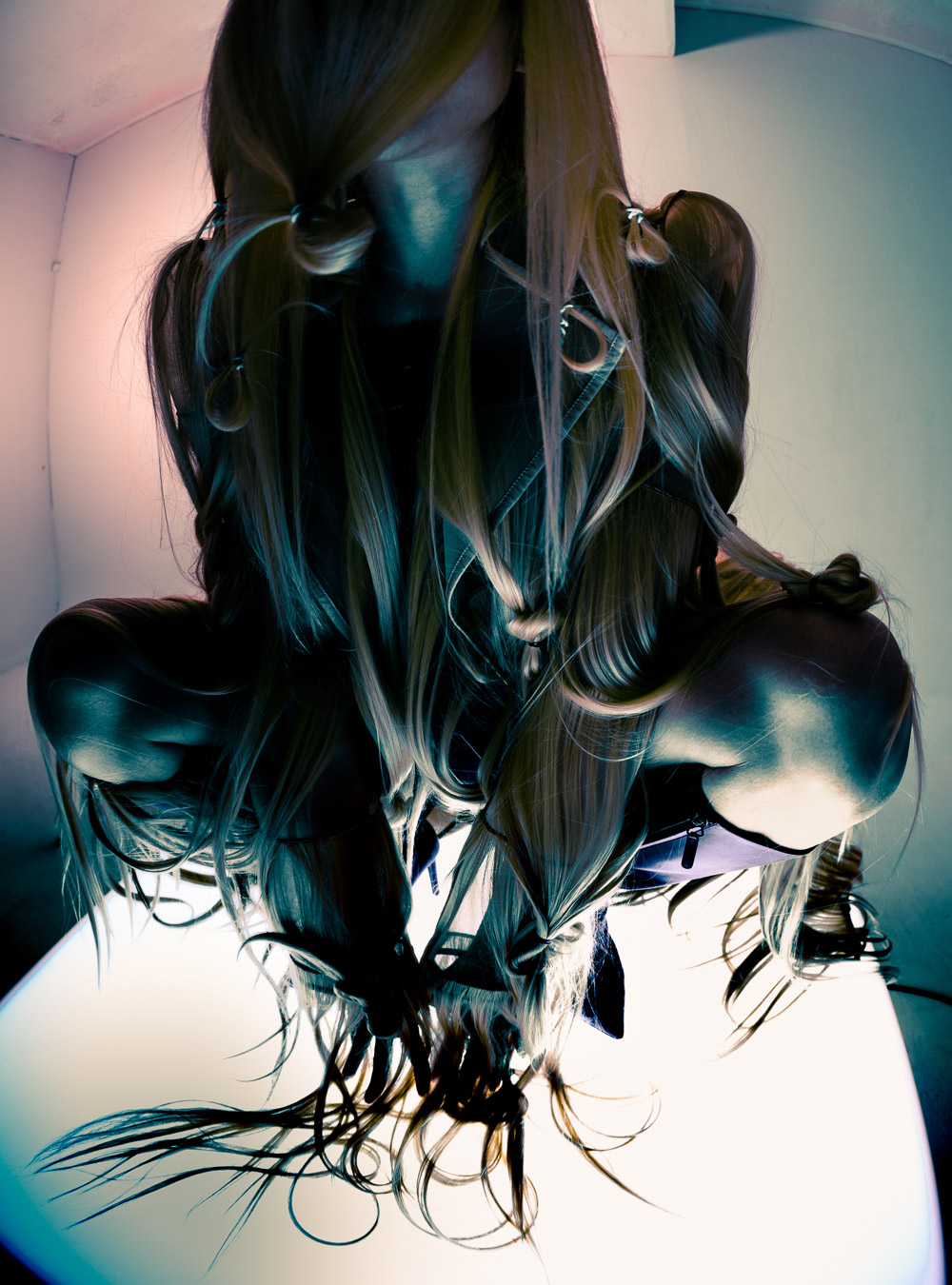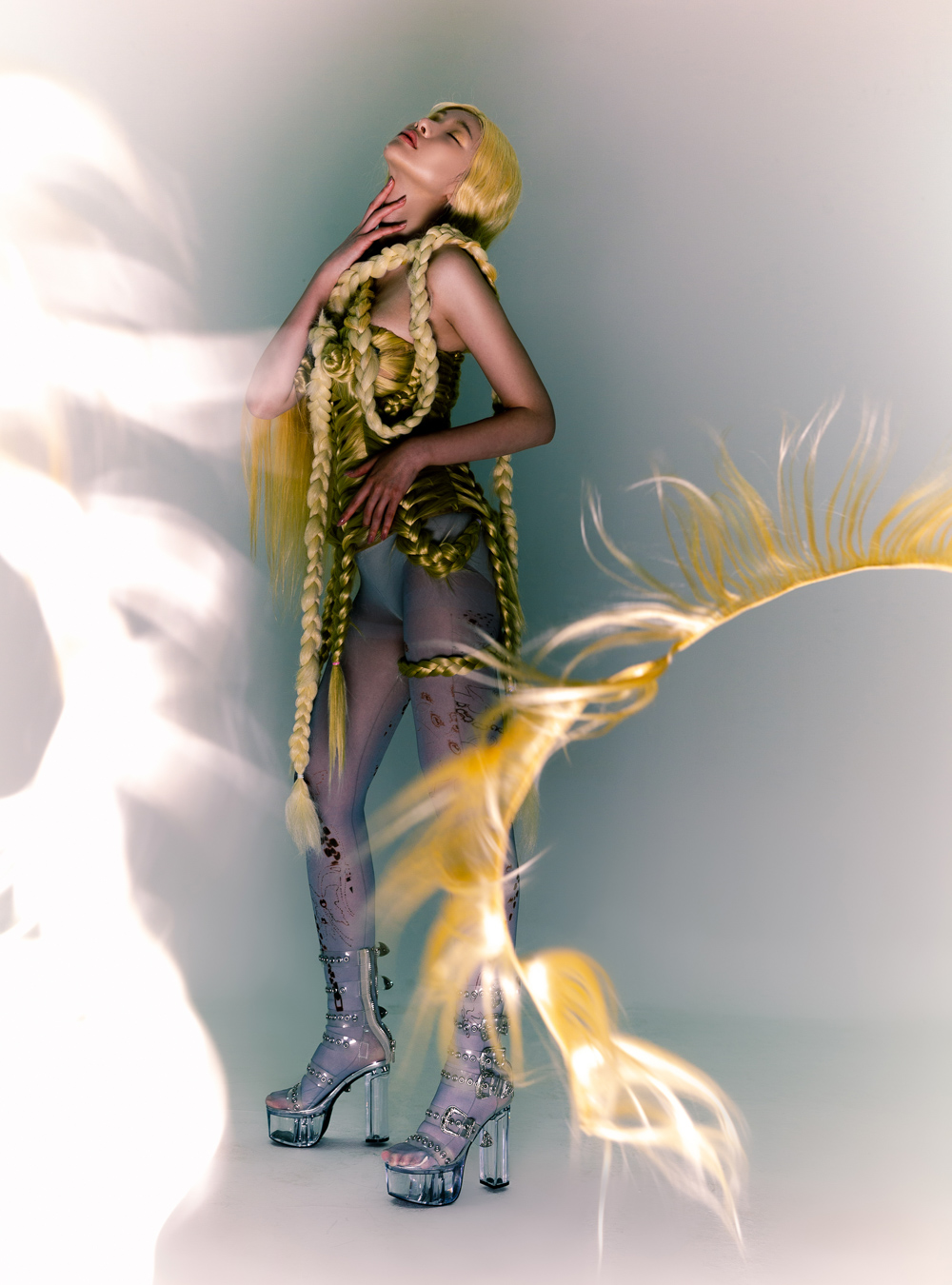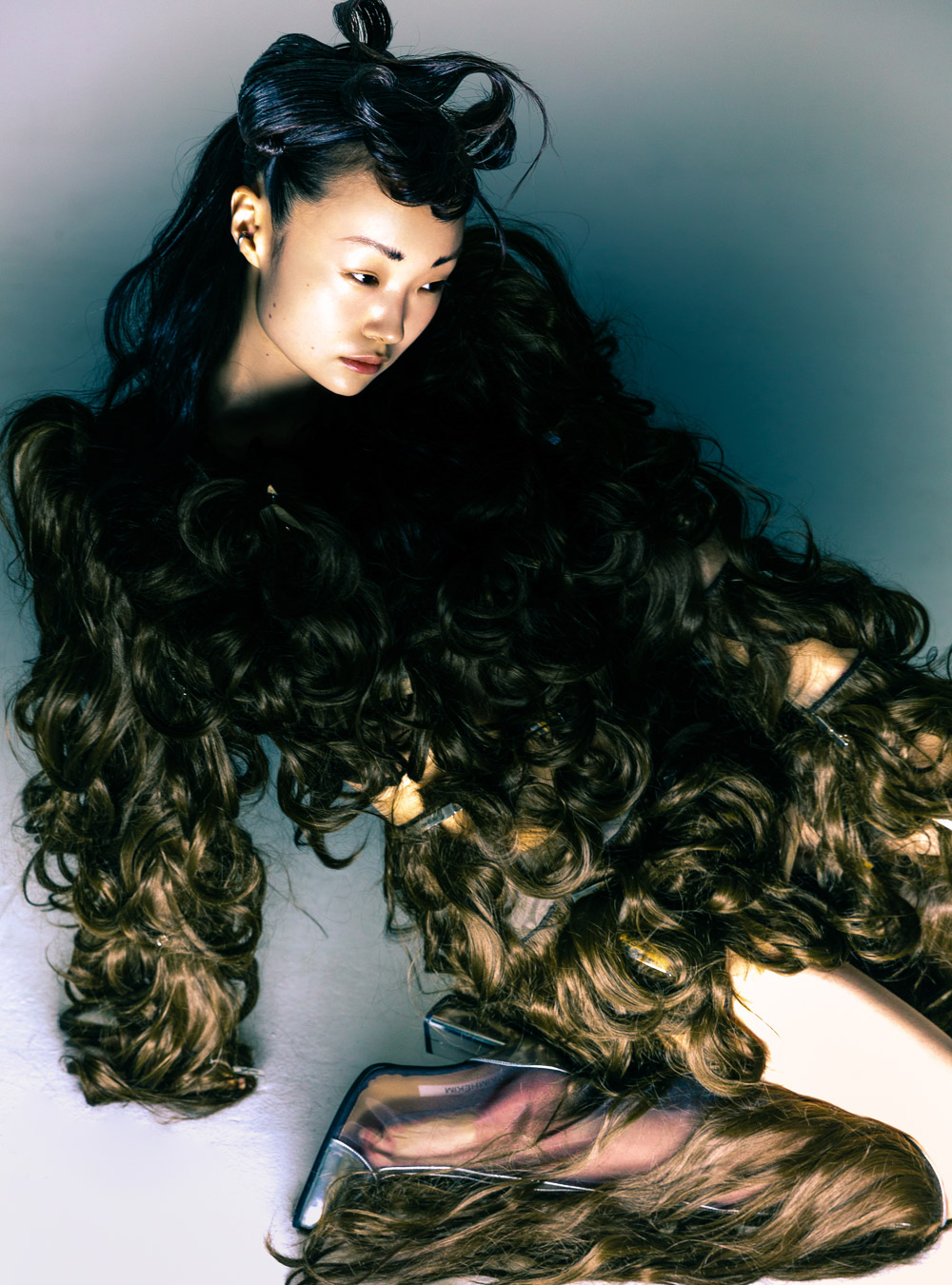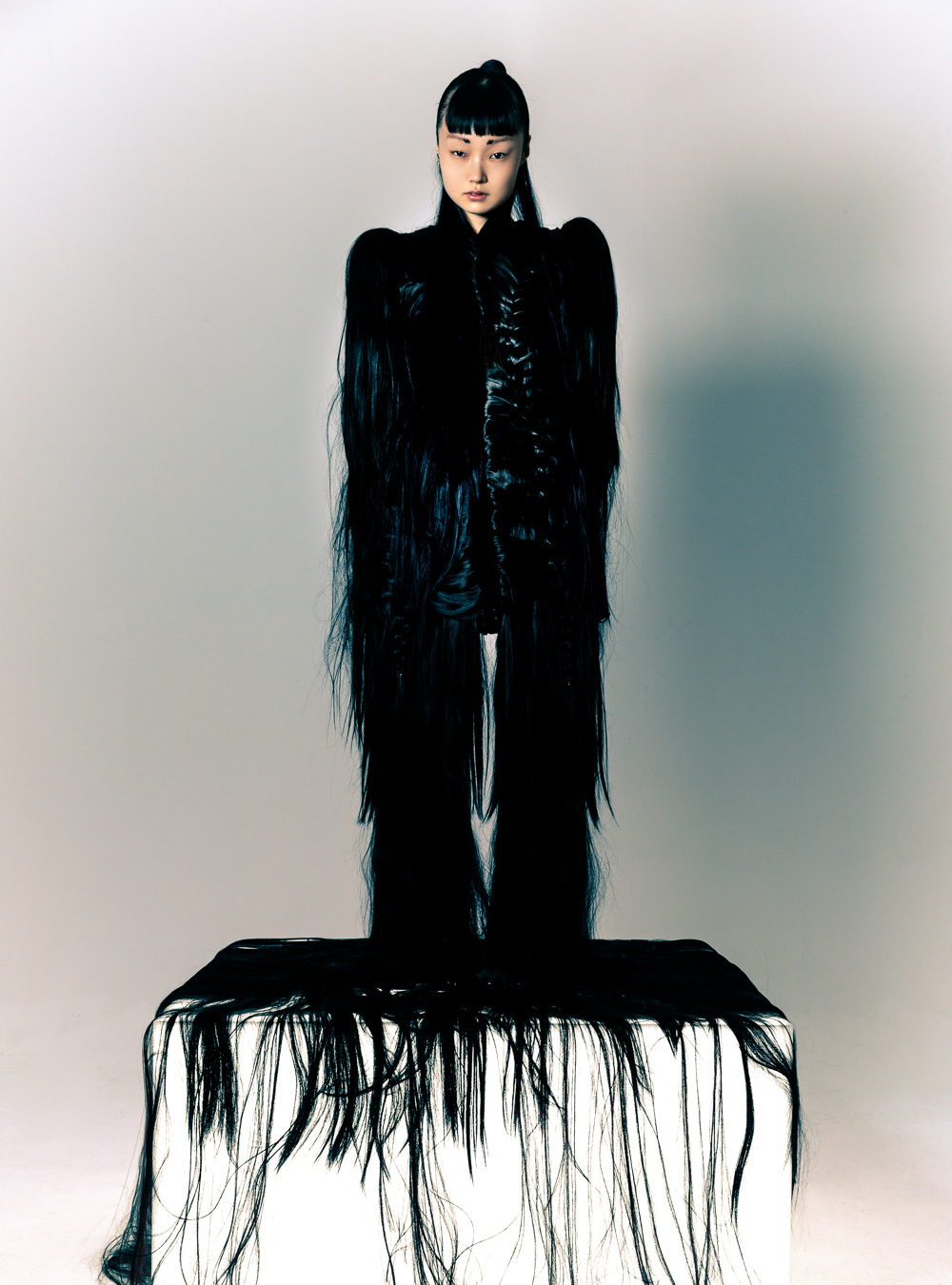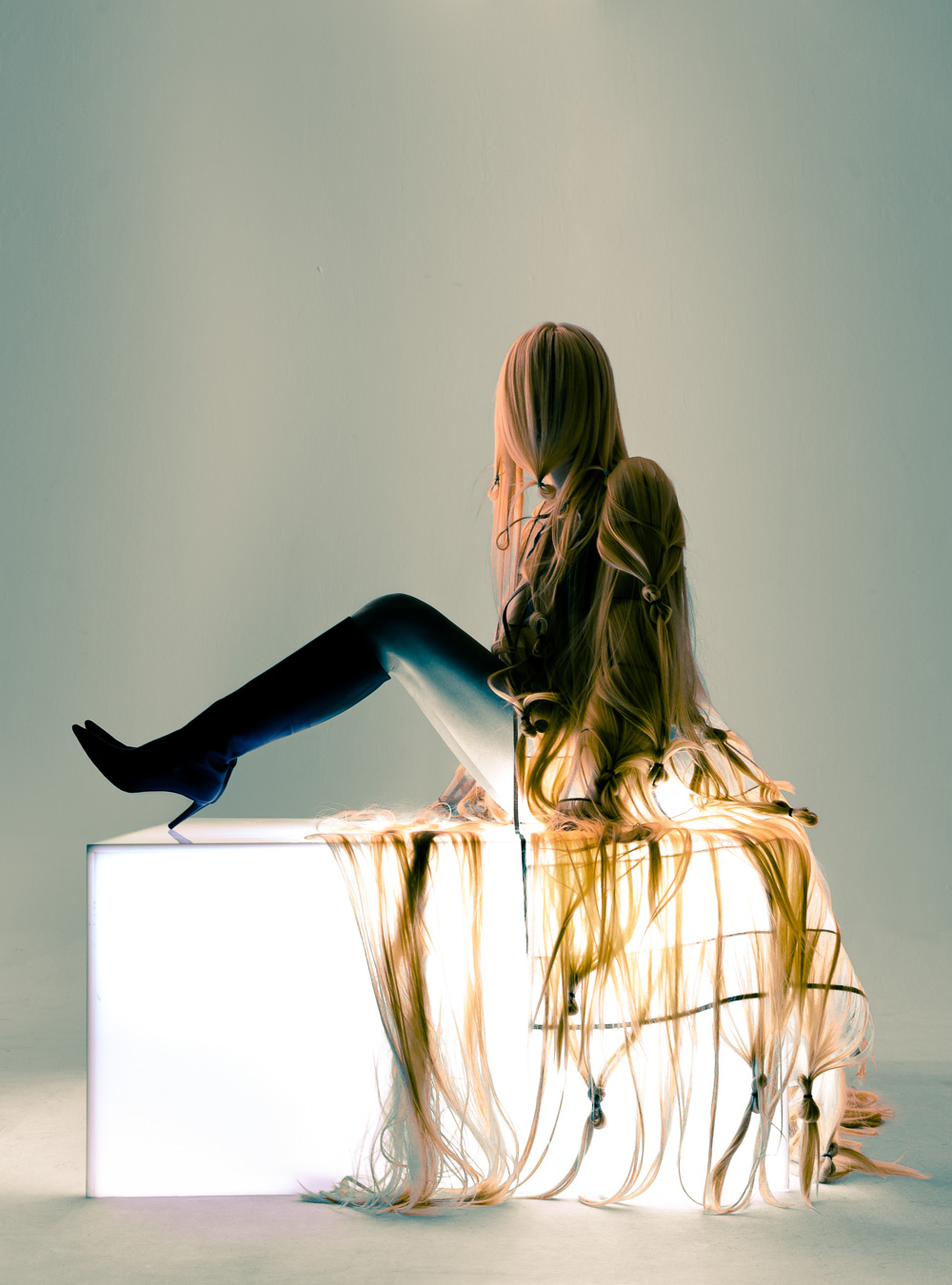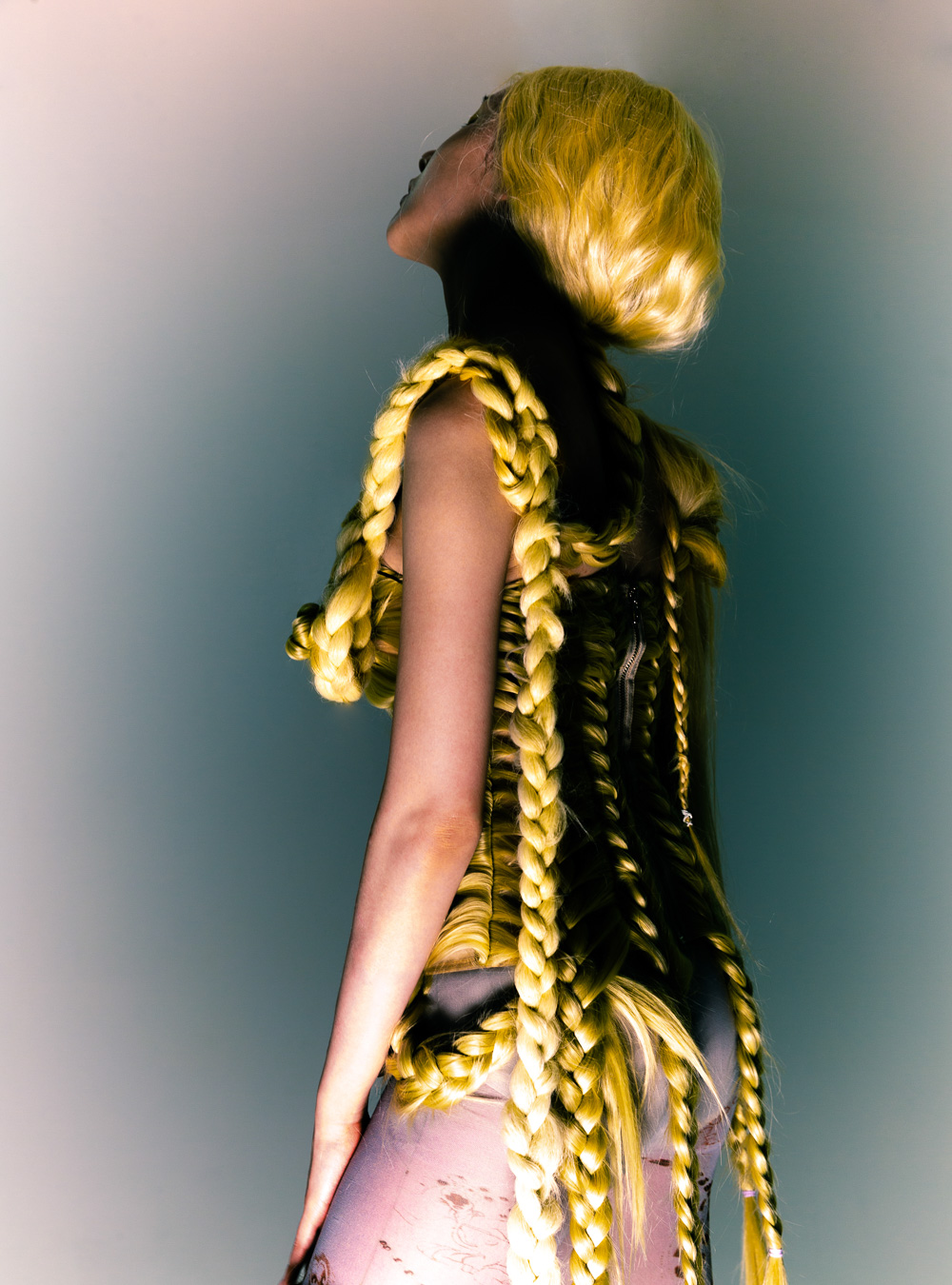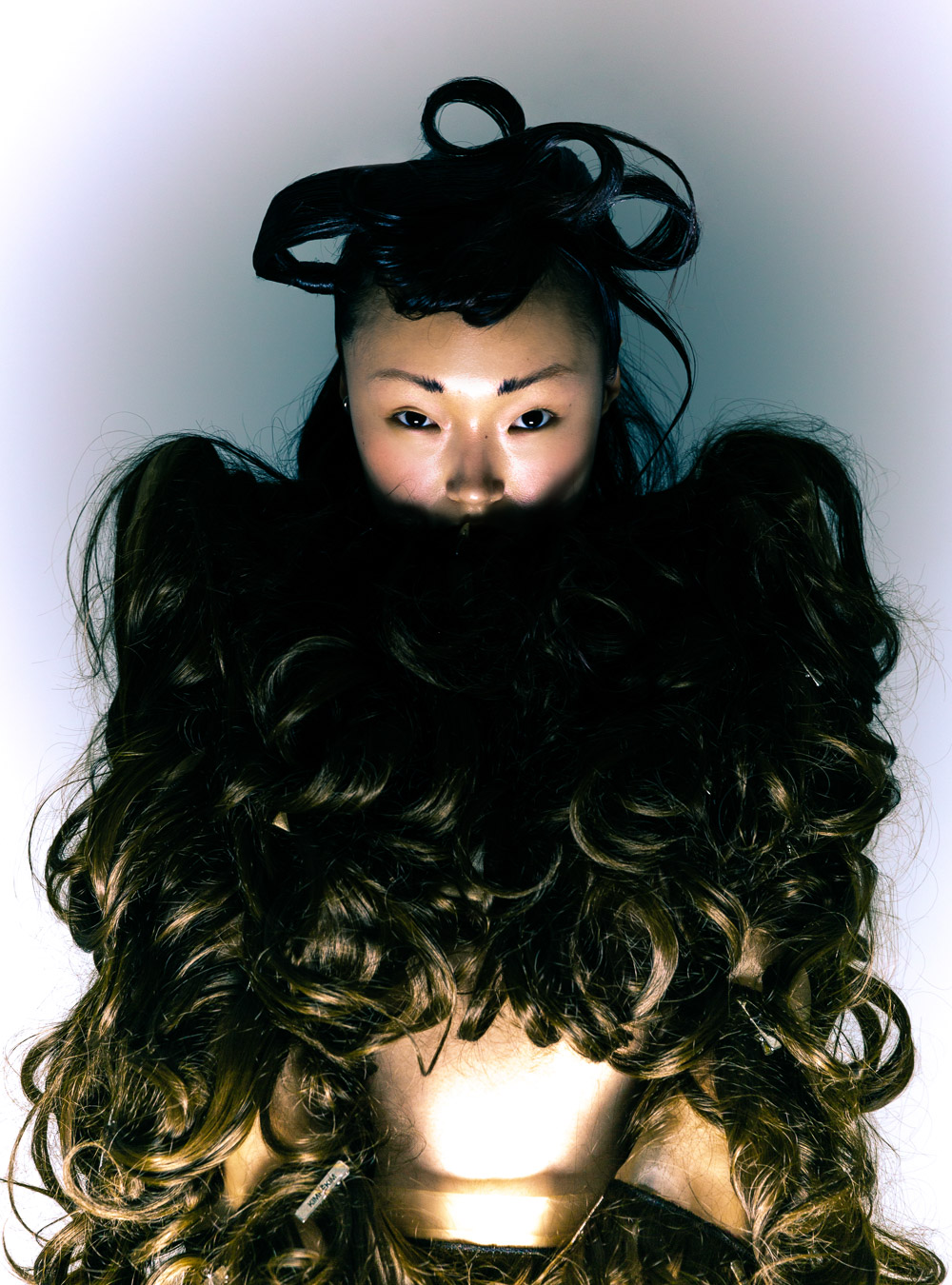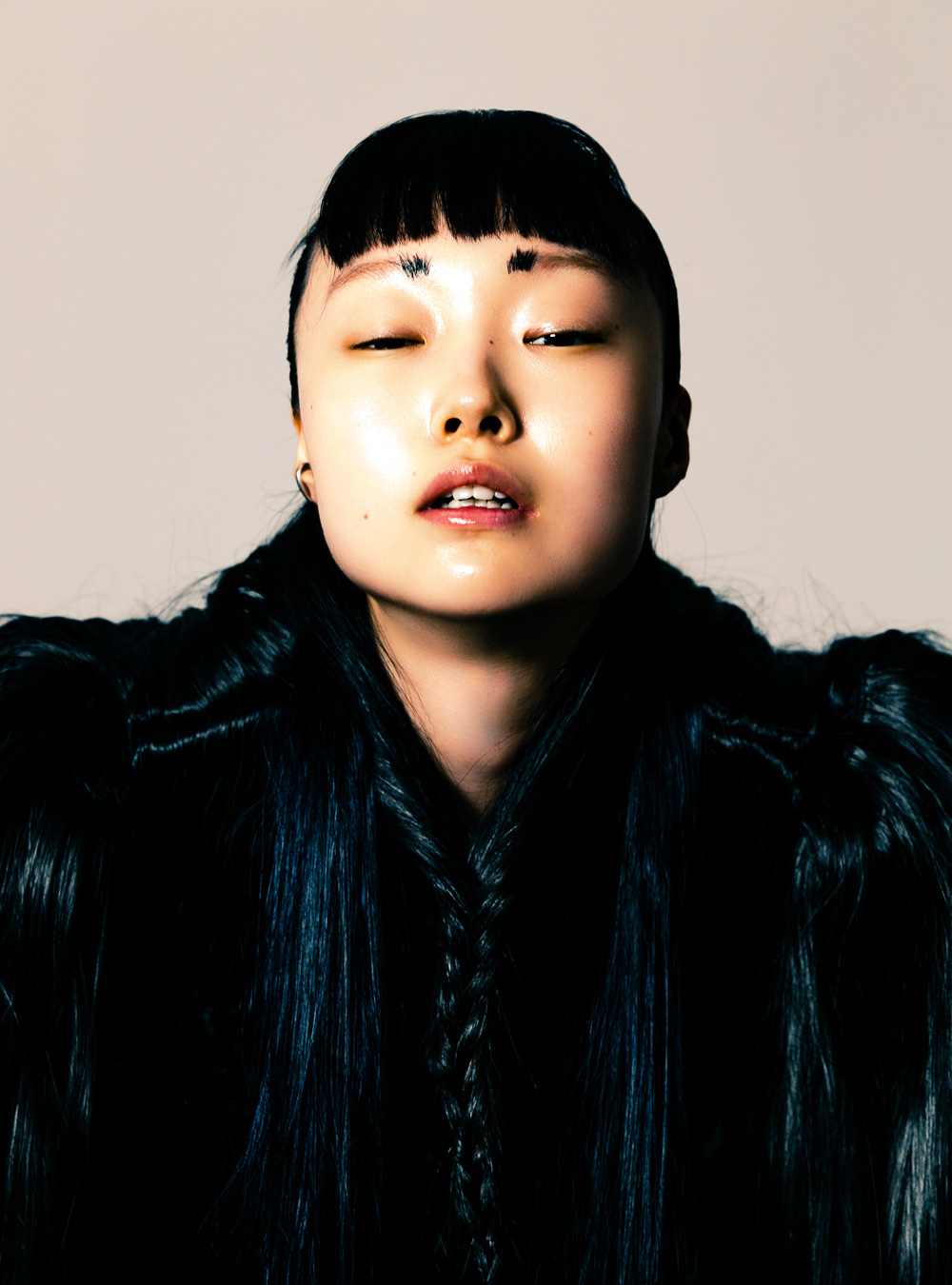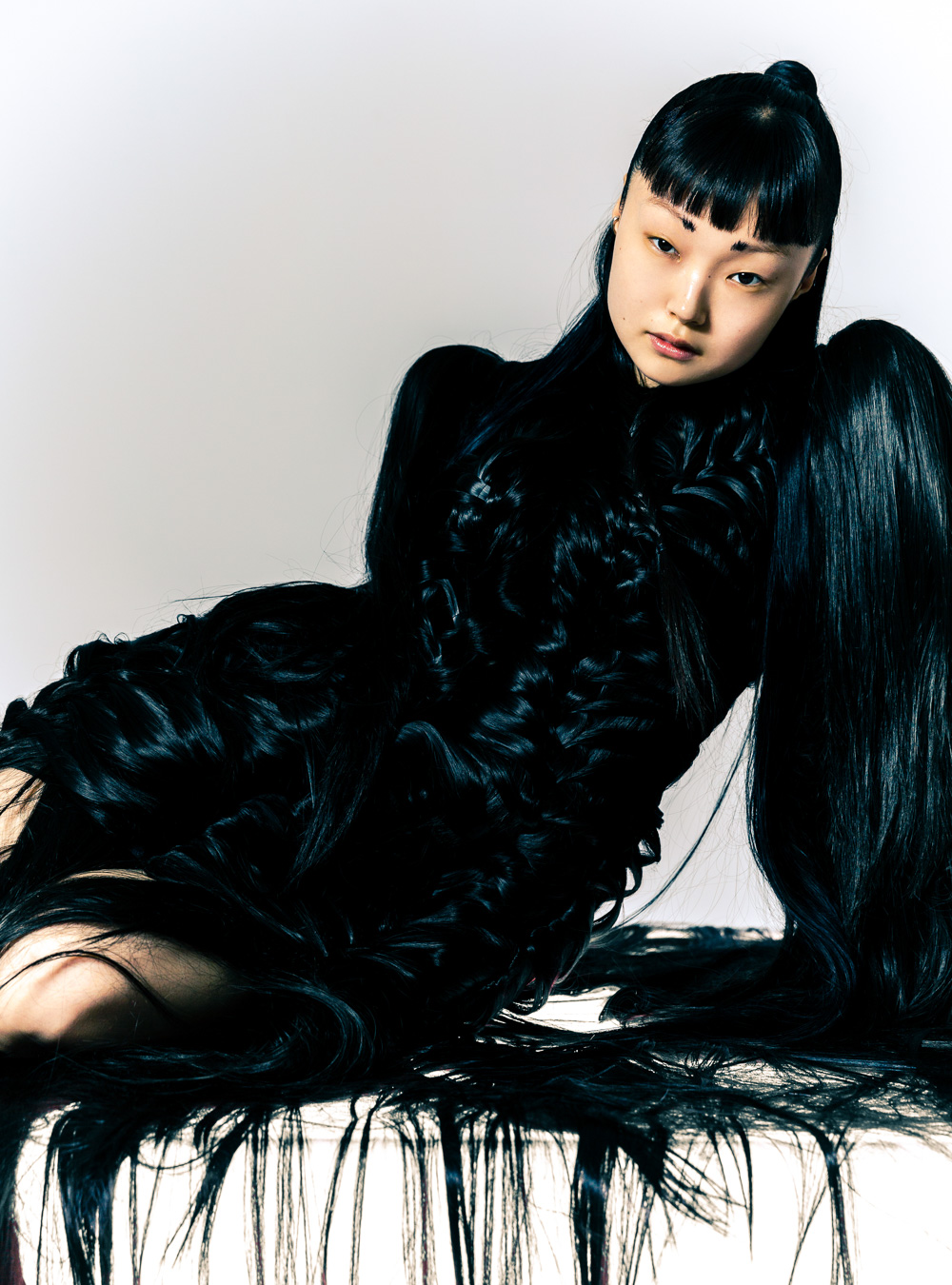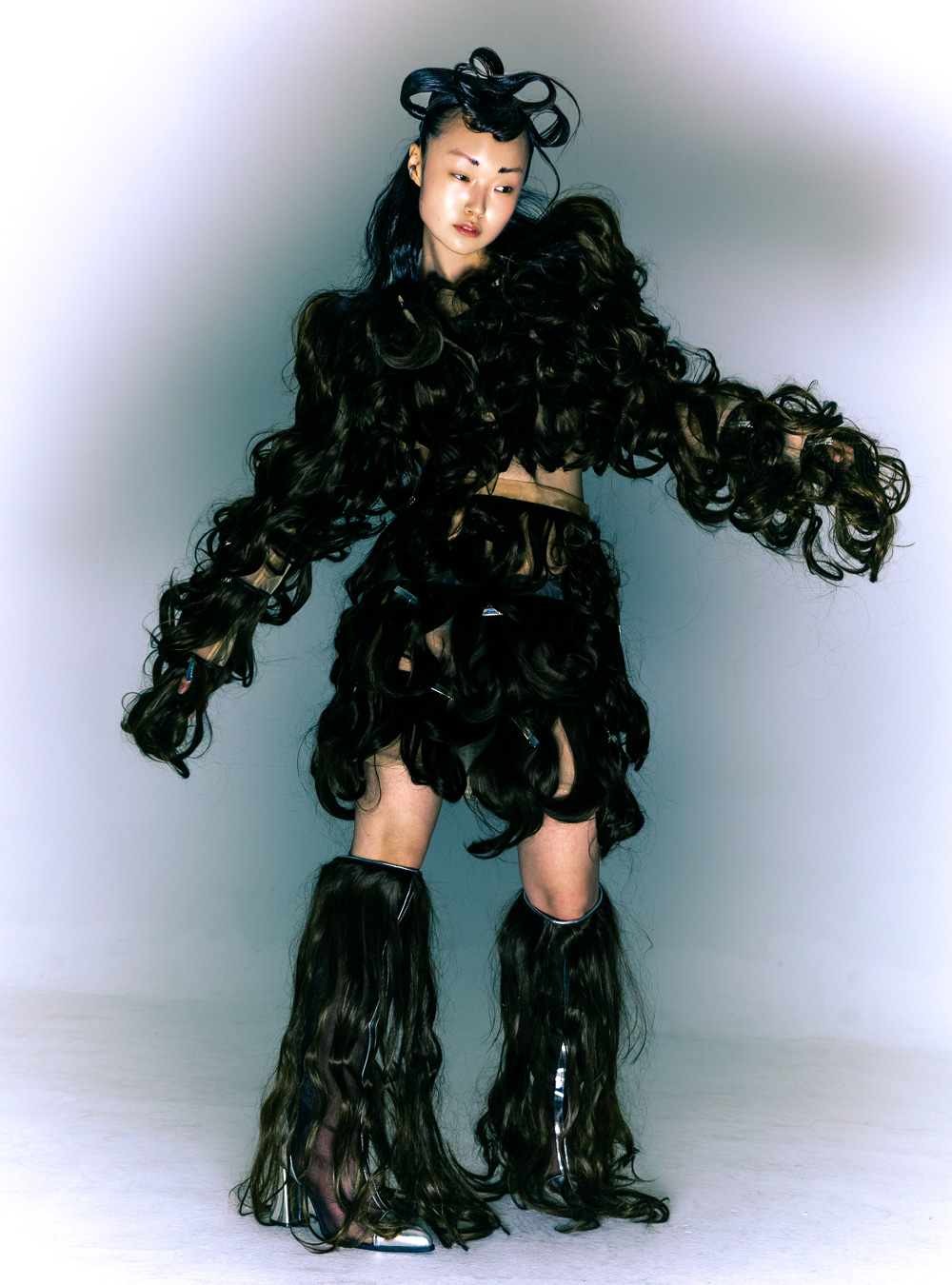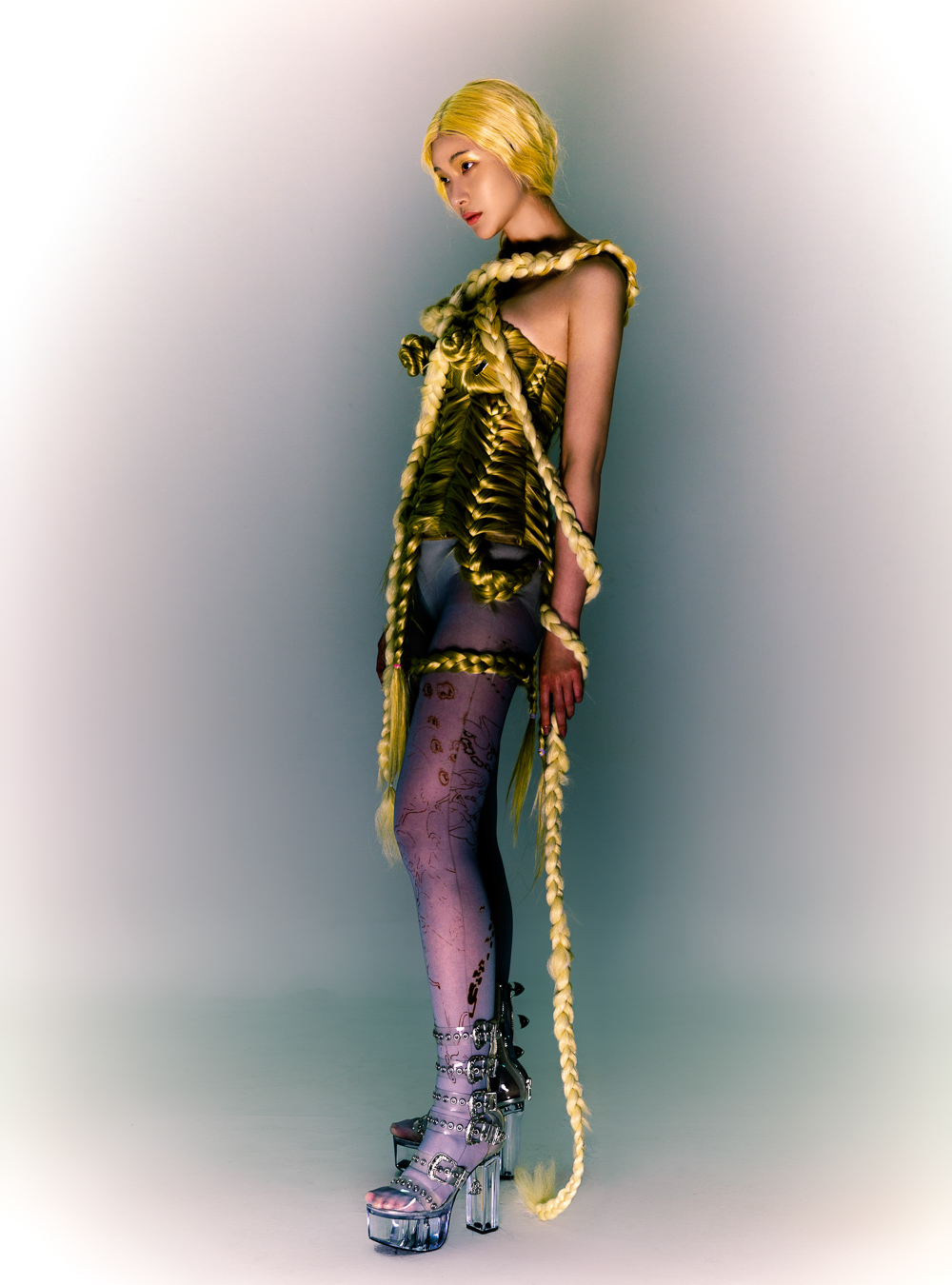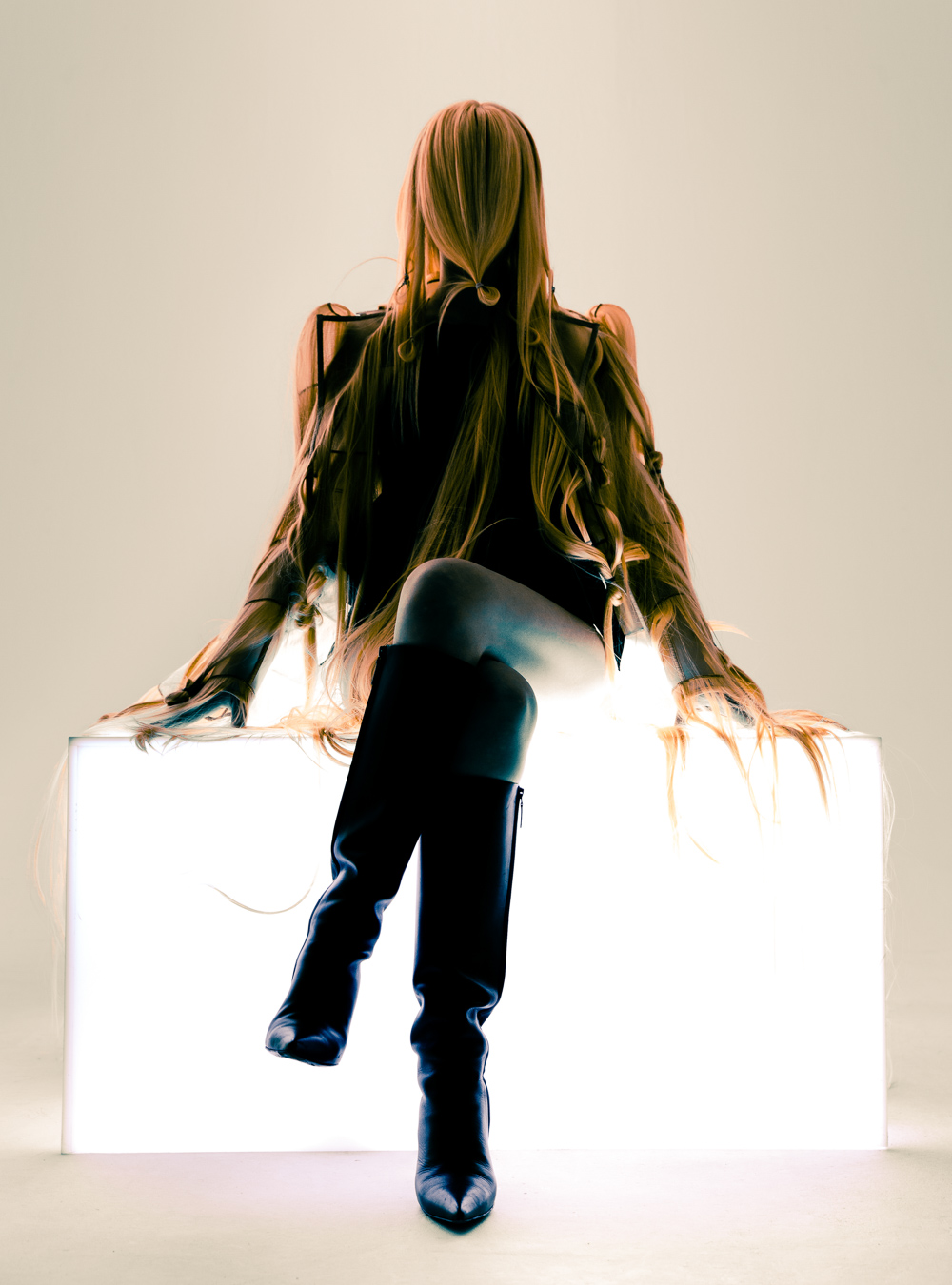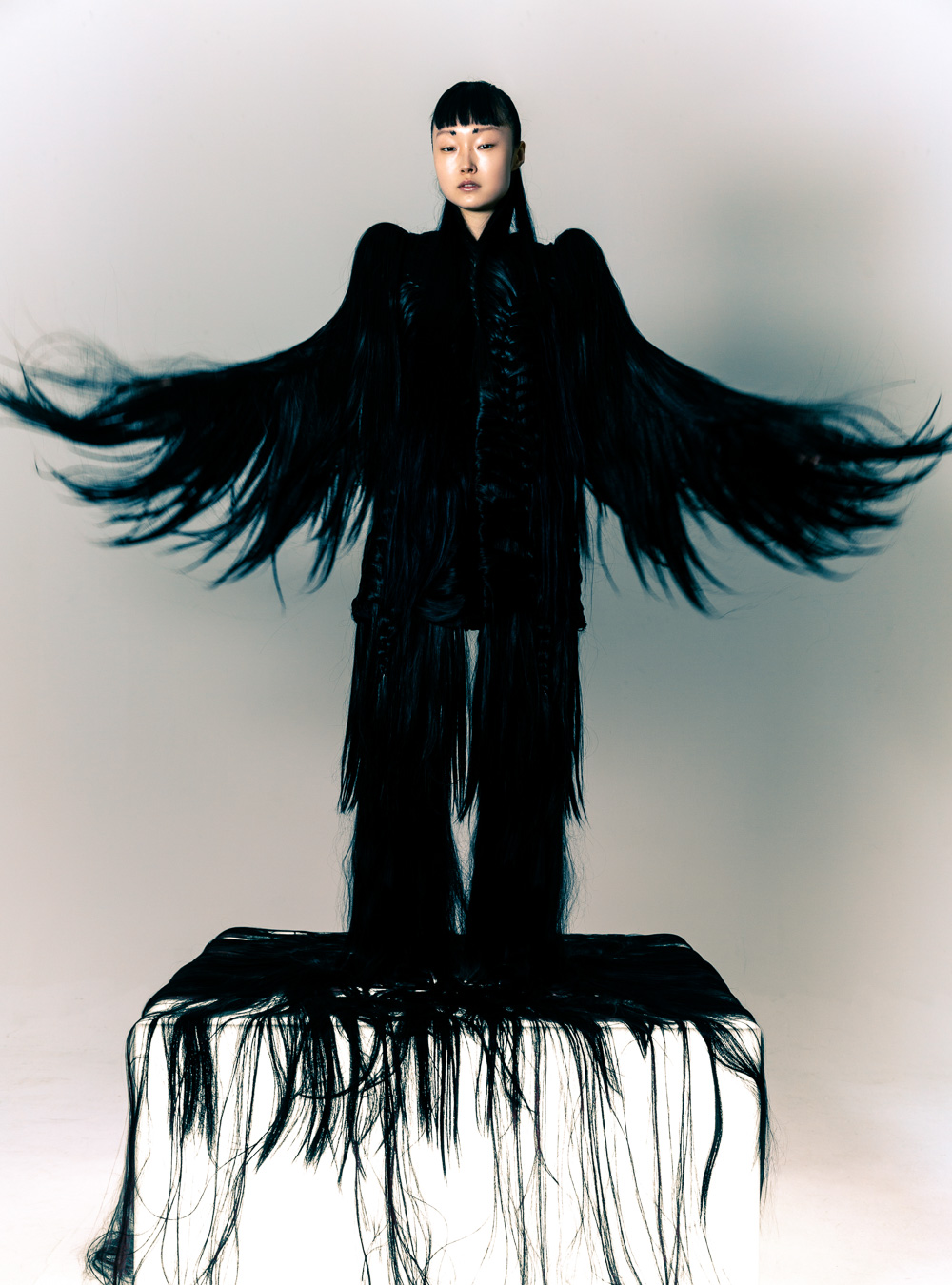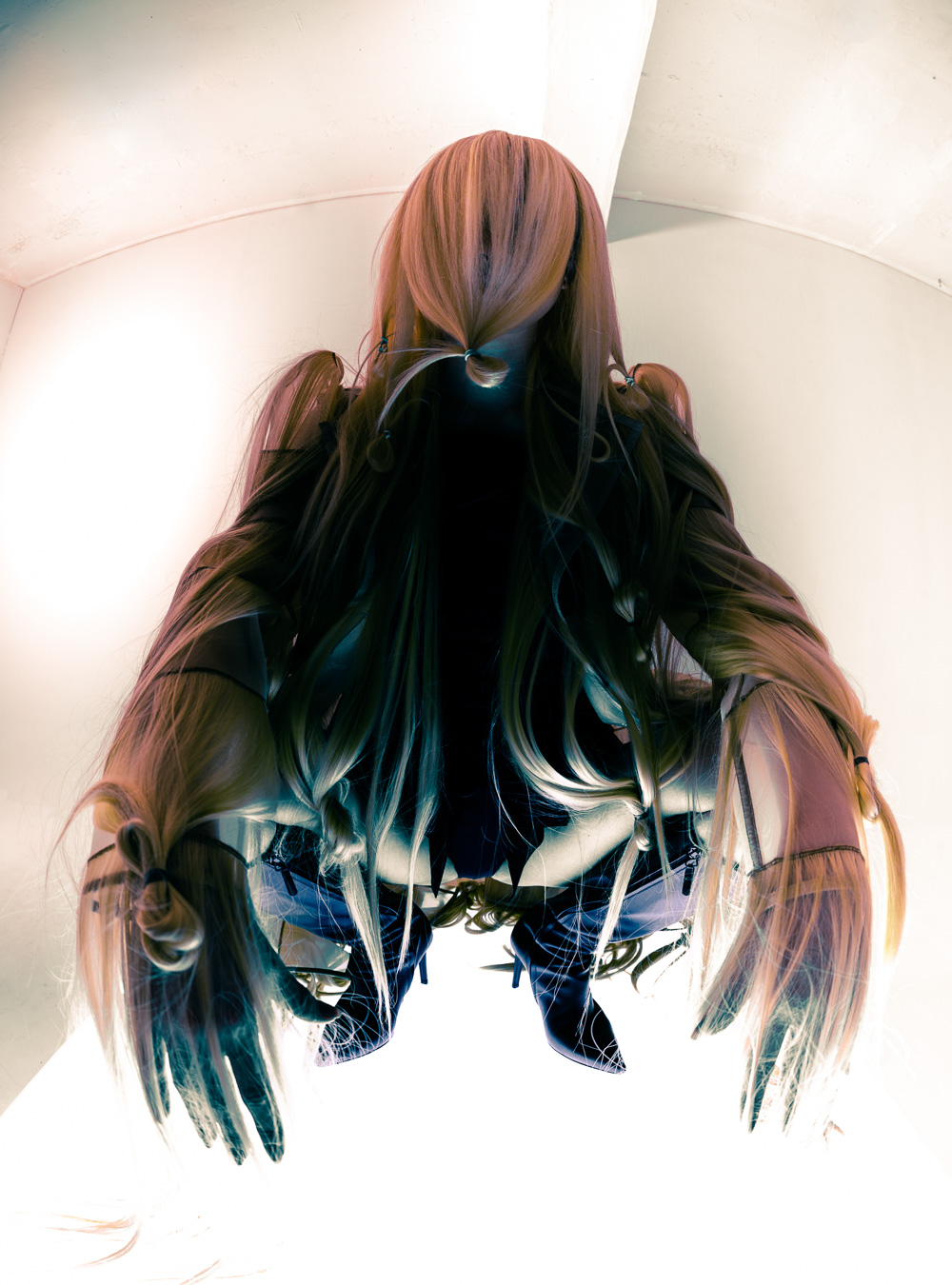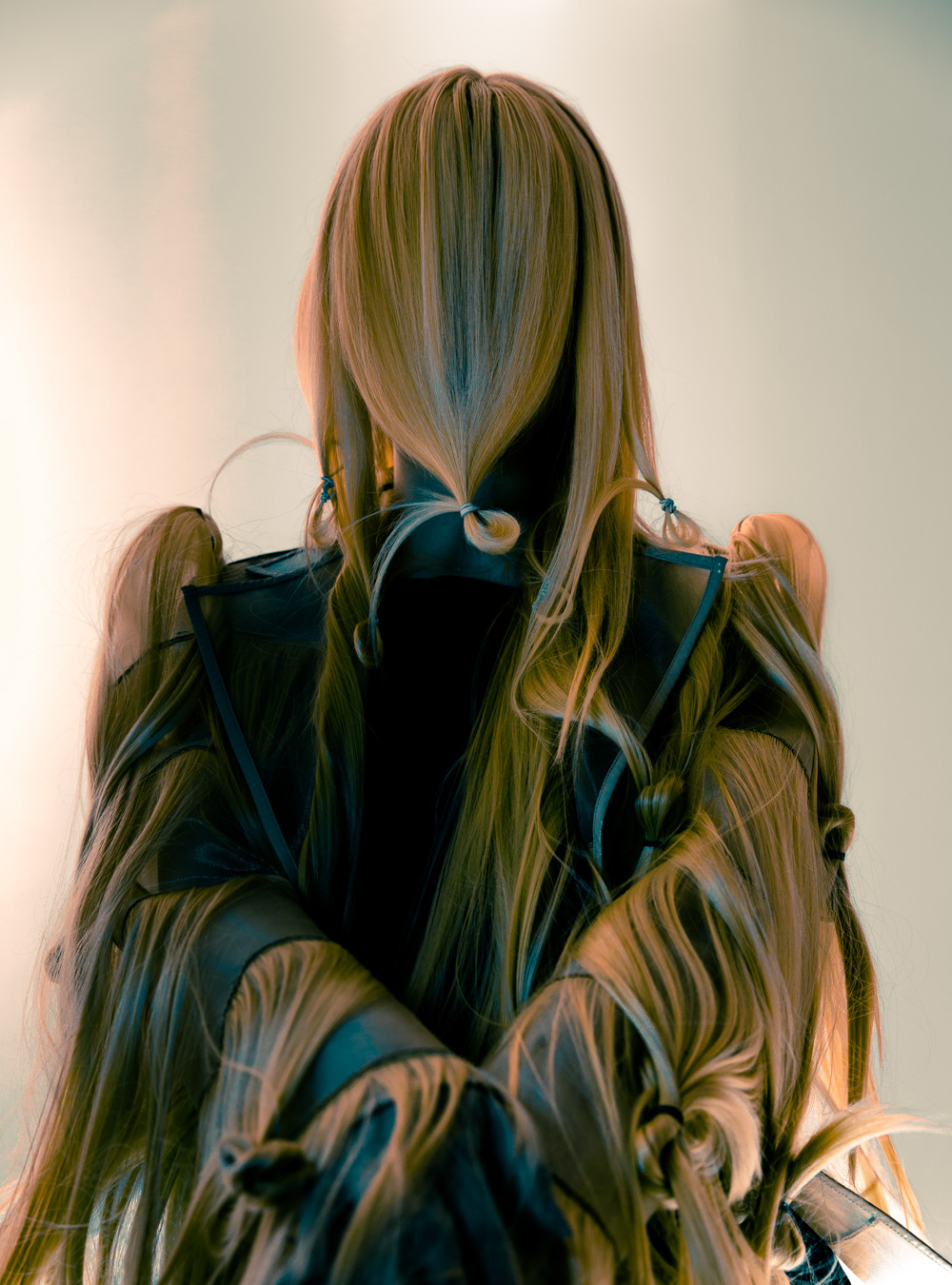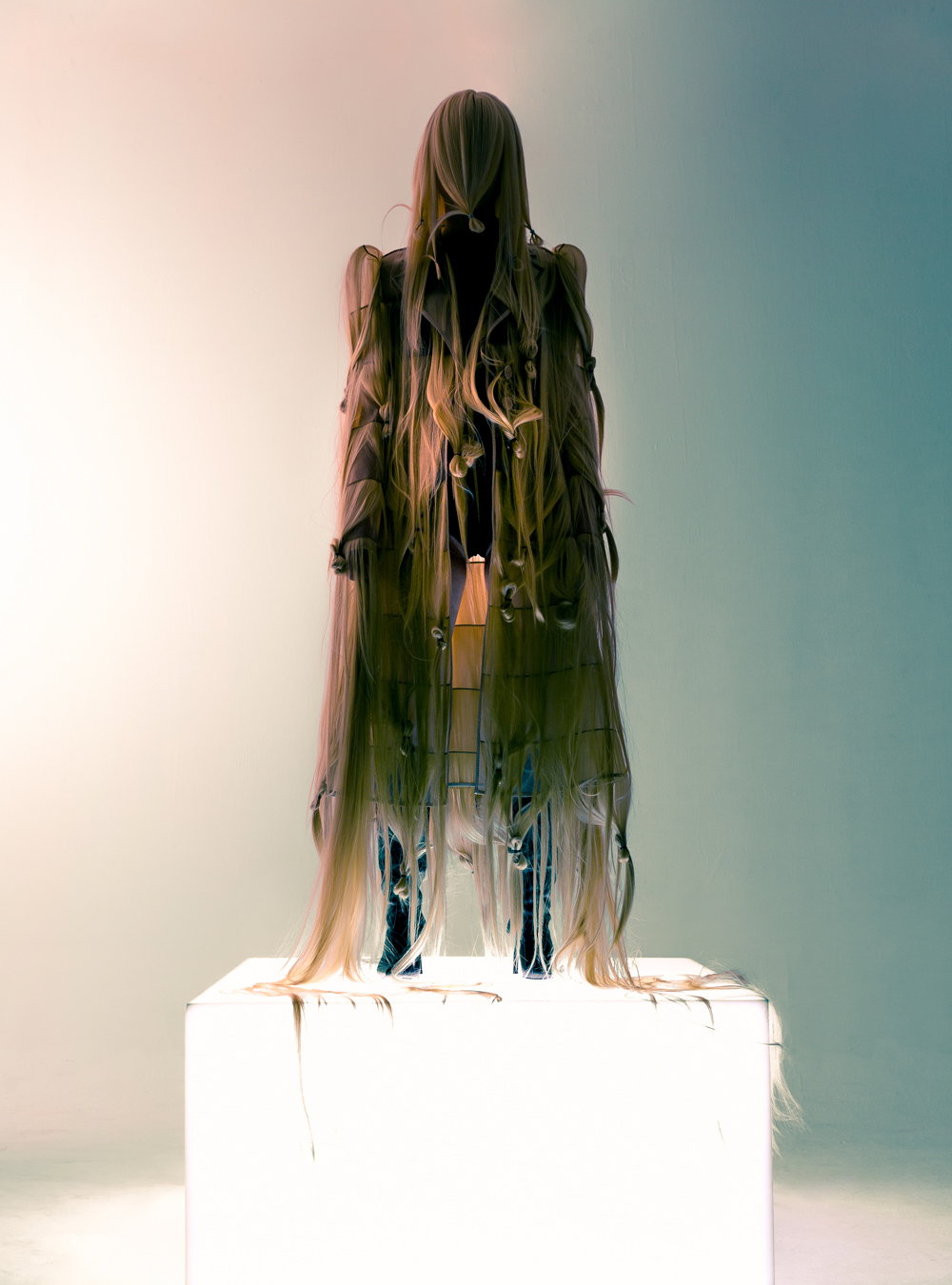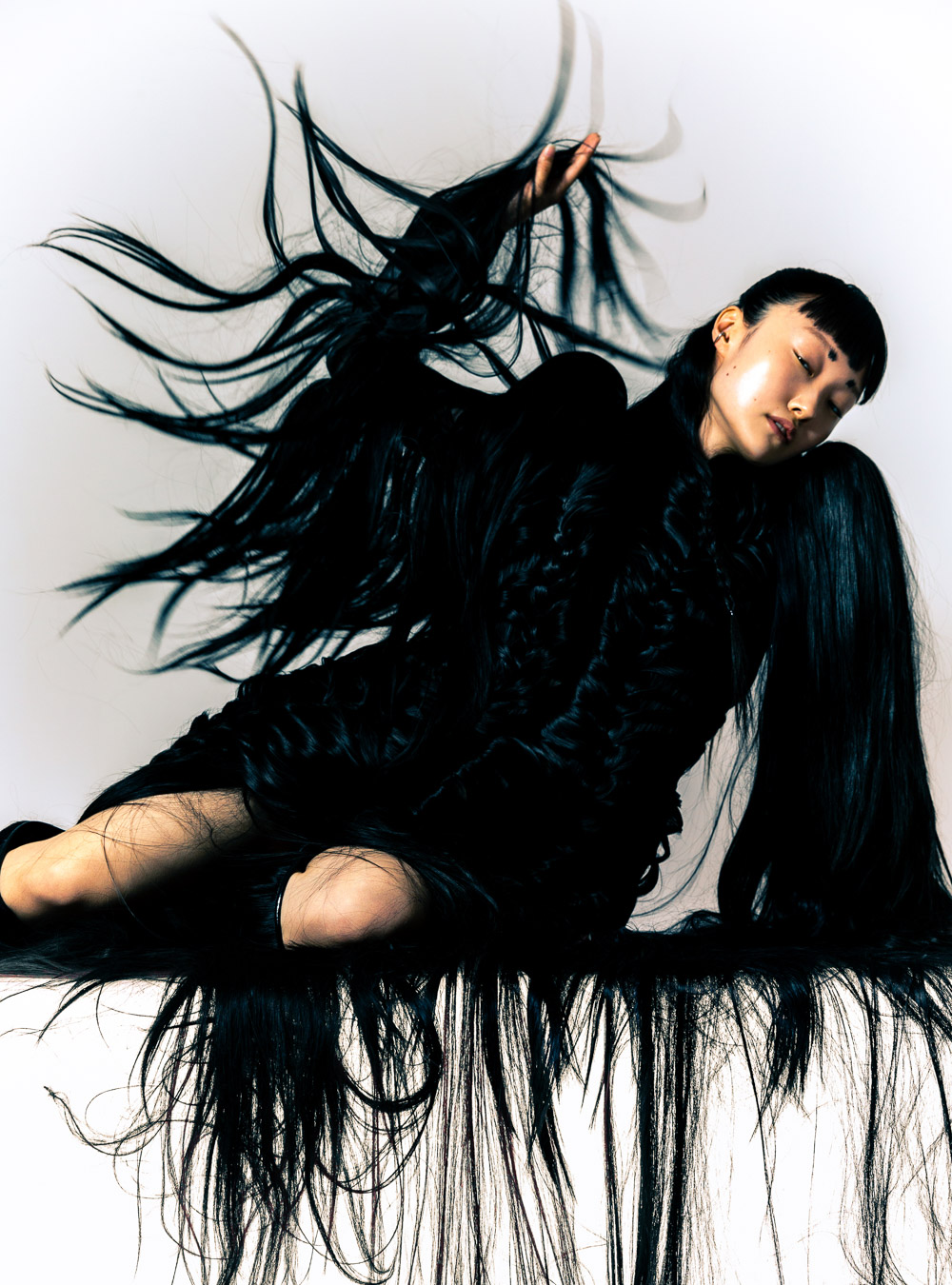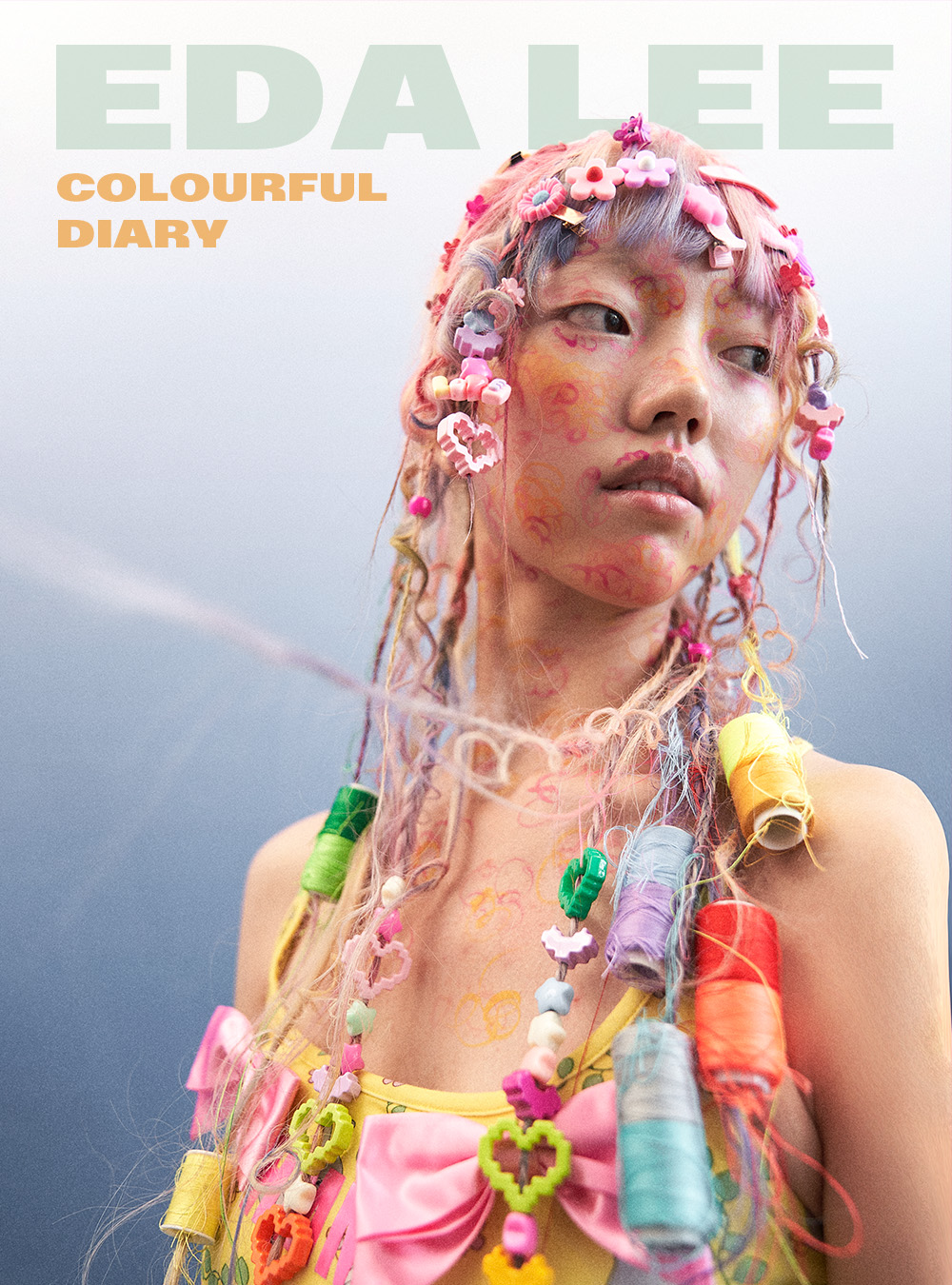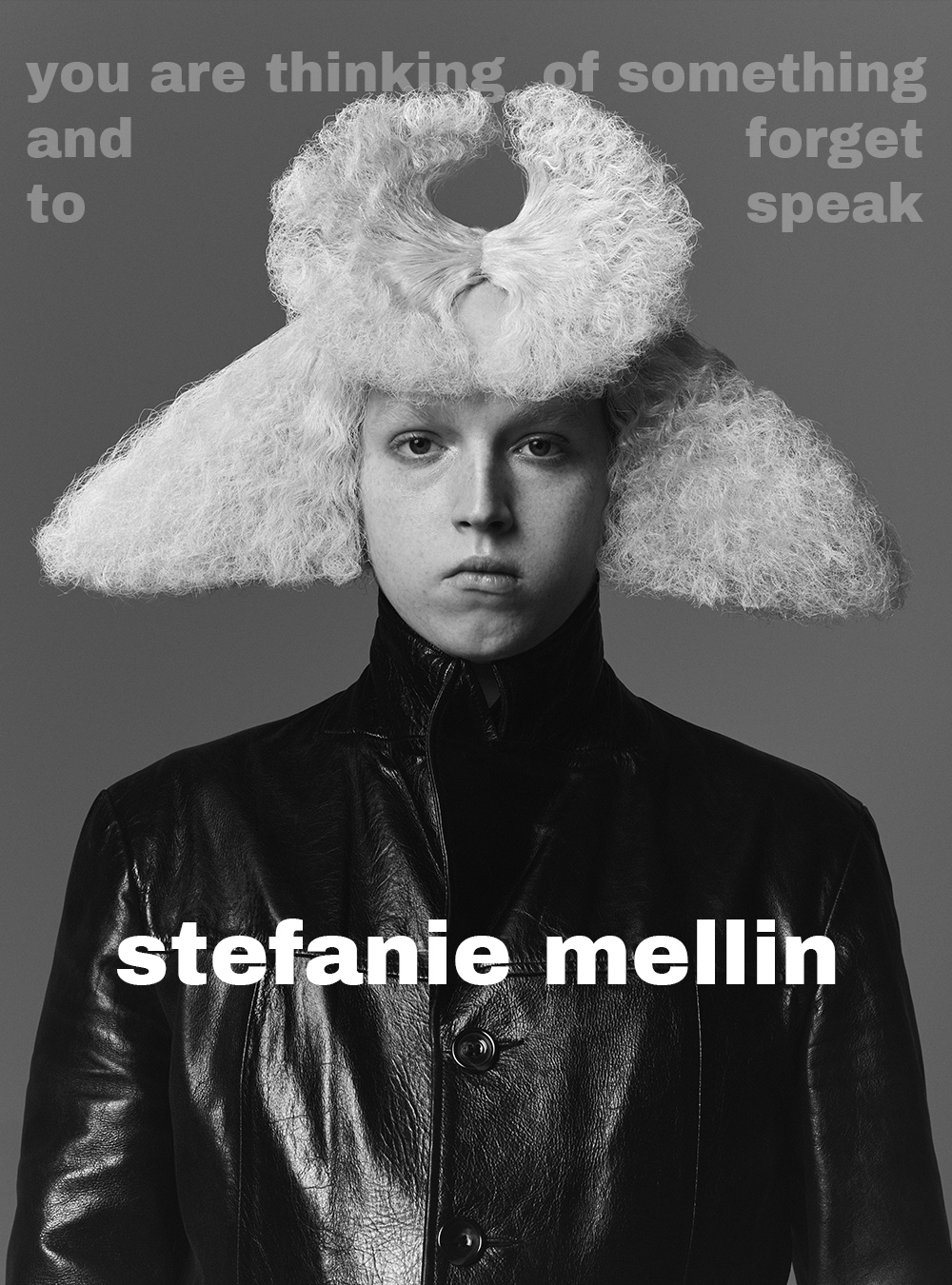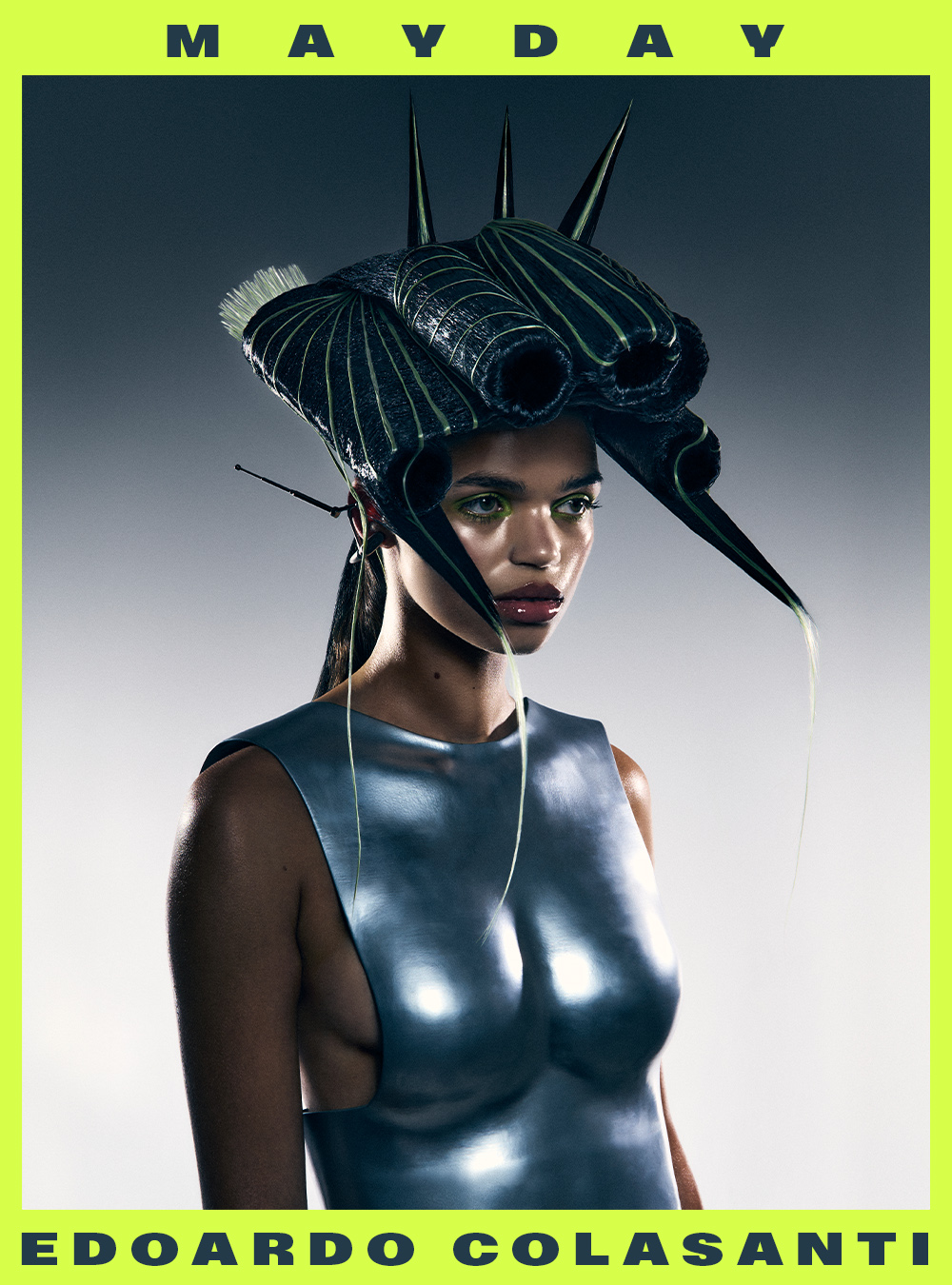PEOPLE: In this rapid-fire Q + A with viral sensation Kiminte of Maison KIMHĒKIM, accompanied by an exclusive editorial by photographer Bakya, the designer discusses Korean hair history, his own childhood, and incorporating hair as a fashion textile
SoKo fashion designer Kiminte Kimhēkim may have honed his skills at Balenciaga, but it was his grandmother who initiated him into the craft of making clothes. This traditional skillset, paired with the cultural value placed on hair in South Korea, calls back to the designer’s childhood penchant for playing with Barbie’s hair in creating otherworldly hair garments that broke the internet last year. INFRINGE had the chance to discuss the collection with the designer breaking down the barriers between hair and fashion.
Though you’ve been producing collections longer, for the past four seasons you’ve titled them ‘Obsessions.’ This year’s ‘Obsession No. 4: Hair Chronicles’ has resulted in an entire collection made from hair. Previously, you gave us ‘Bow Universe’, ‘Women in Canvas’ and ‘Rose & Cuir’. What leads you to select an obsession – or does it choose you? It really depends on my mood and where my interest lies at that time. It gives me great joy taking the time to concentrate on each of the decorative elements, studying their beauty and then finally sublimating them into my collection.
As a designer, what unique characteristics or capabilities of hair drew you to use it for an entire collection? Hair is associated with my childhood memories. I spent a lot of time playing with Barbie dolls with my cousin and I had a lot of fun braiding my cousin’s hair like a Barbie. There was a sense of pure joy in creating this collection, as I drew inspiration from my childhood.
When does hair turn from accessory to material? I personally don’t think hair is ever an accessory. It’s the most primitive material to exist in human history.
Are there textures or textiles that you feel juxtapose particularly well with the type of hair used in your collection? The denim and organza material worked harmoniously with the hair used. The transparent nature of organza blends well with hair and the denim texture makes the hair items look more wearable.
What has been the general response in the fashion space to your use of hair as a fabric? Although some haters responded by saying things like ‘it’s gross’, most people found it quite interesting. I received a lot of messages from people working in the hair and beauty industries and they even requested orders for the pieces. Overall, I think incorporating hair as a material for the garments was quite successful.
How did you style the hair on the models’ heads for this collection? I left the models’ hair natural for this collection. I thought it would be too much to style their hair on top of the already styled hair pieces.
We are always on our phones, spoiled with stimulation. How do you still make an impact these days? We need to balance stimulations – watching our phones is a form of visual stimulus. But I also think tactile stimulation is very important. I run a physical showroom in the centre of Seoul so our followers can visit us and not only see but also touch our collection pieces in real life.
You’ve spoken about the role you feel your Korean roots play in your design sensibility and process. Are there any hair traditions or cultures in South Korea that you feel contributed to the collection? During the Joseon Dynasty (1392–1897), hair was considered to be a gift given by one’s parents, and people weren’t often allowed to cut their hair. Instead of cutting it, they became interested in different ways to take care of it. They would use soap made from chungpo, a natural plant, and braid their hair in the special daenggi style (where ribbon is used to tie and decorate braided hair). This tradition inspired me to develop the braiding skills used to create a solid dress for my collection.
With climate change, the pandemic and war, there’s a general feeling of gloom and doom. What keeps you hopeful and excited for the future? I’m optimistic about the future. I hope the doom and gloom caused by the pandemic and war is a stepping stone, bringing us closer to a brighter future. I’m excited to see futuristic technologies unfold in real life. It would be amazing if I could use the technology that instantly covers the entire skin with electro-waves with just one click on a button. I want to definitely live longer to enjoy these kinds of technologies.
Did you work with hairstylists for this collection or did you purposefully approach it without a hair background? I purposely wanted to execute this collection without assistance from any professional hairstylists because I wanted to experiment and develop with my skill set.
What is next for you and your brand? Where are you in your future dreams? I want to build a space in the decorative art sector where all kinds of artists can share their dreams.
Photography: Bakya
Hair: Ahn Hyeong-gyu
Makeup: Ha Eun Bin
Styling: Kim Yungman
Model: Niko + Viia Yeon
Interview: Hasadri Freeman
Special Thanks: Maison KIMHĒKIM
